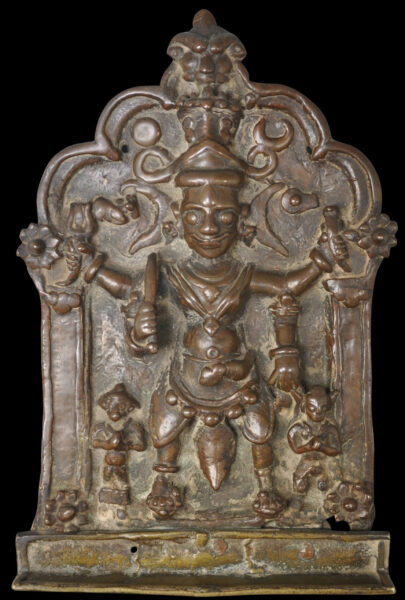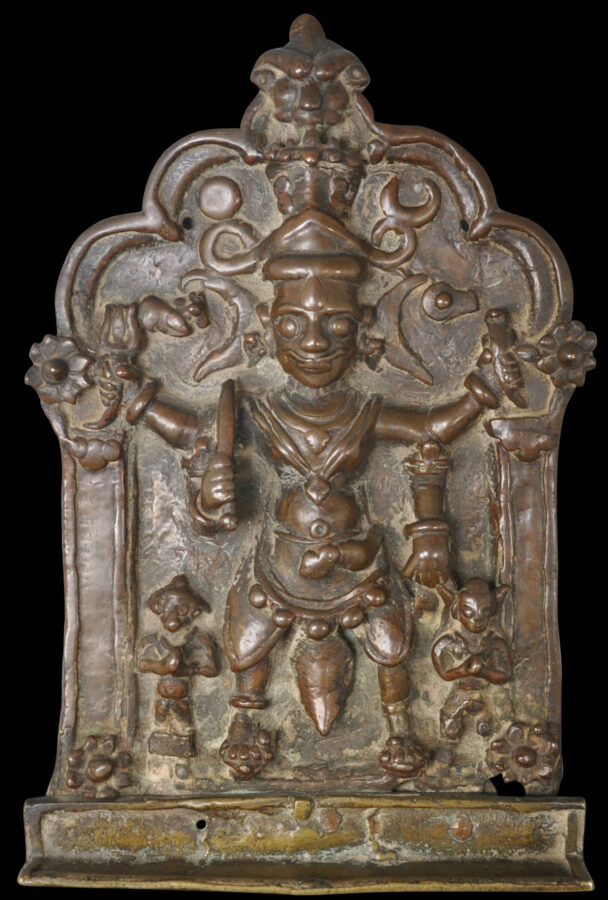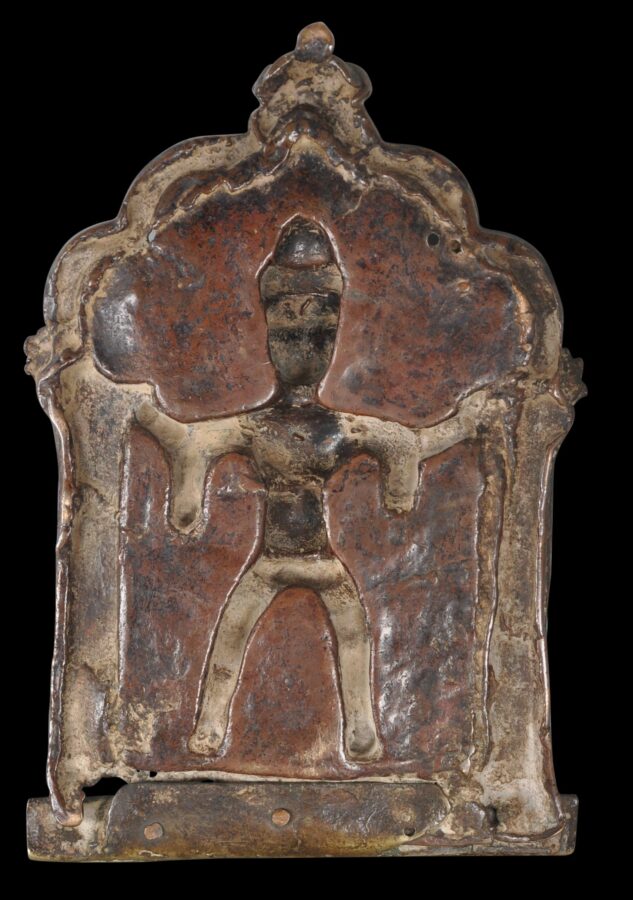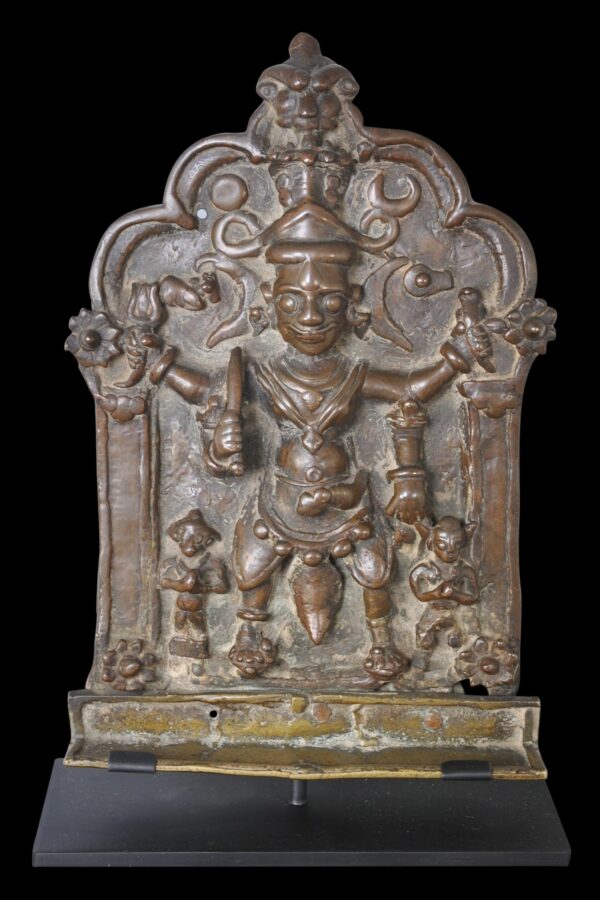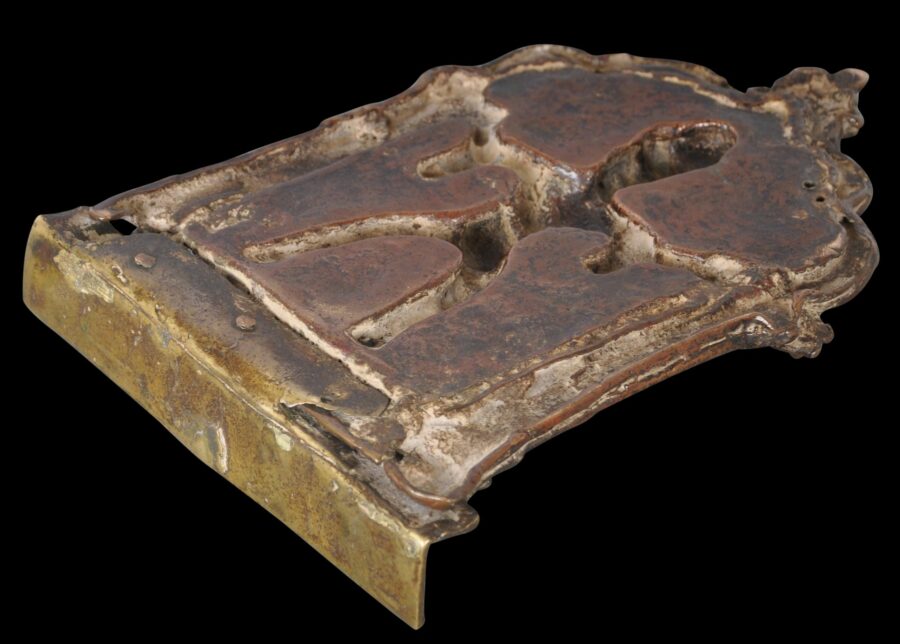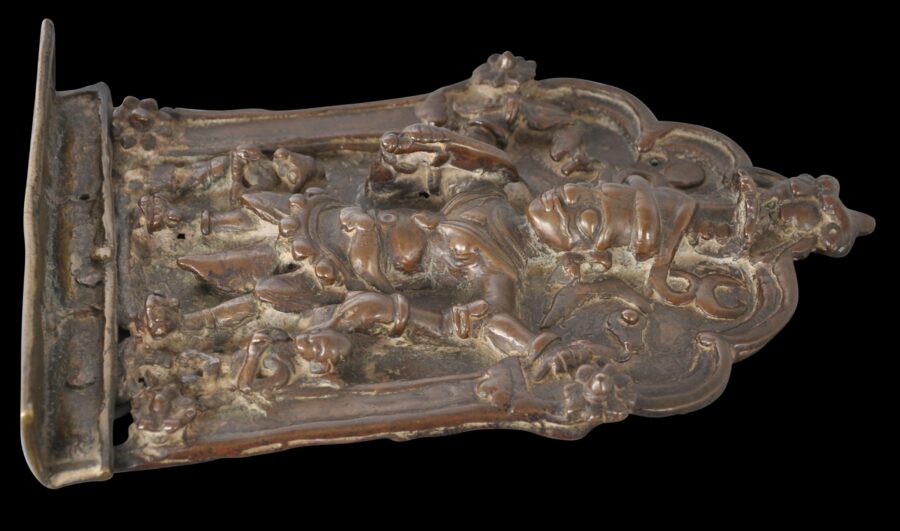This superb plaque of the god Virabhadra has been cast and chased in bronze. It has an exceptional patina, very obvious significant age, and most probably dates to the 16th century.
Of rectangular form, the top has been shaped as a scalloped arch.
Virabhadra is shown in this plaque standing in classical tribhanga pose, with four arms in which he holds a sword, a (small) shield, a trident and a bow. He stands beneath a five-headed cobra, and beneath an arch topped with a kurtimukha mask finial.
Daksha, whose human head was replaced with a ram’s head, stands on Virabhadra’s right, his hands in anjali mudra.
The figure to Virabhadra’s left is Bhadrakali, Virabhadra’s consort, also standing with hands in anjali mudra.
A nandi and a lingham are shown adjacent to Virabhadra’s head, and above these is a sun motif and a crescent moon motif.
Virabhadra’s clothing and ornaments are shown in some detail. The deity is shown standing on paduka shoes.
Virabhadra, an incarnation of Shiva, was created after Shiva’s wife, Sati, was not invited to a great sacrifice given by her father Daksha. Sati, being greatly humiliated, went to the banquet and threw herself on the sacrificial fire. When Shiva heard of his wife’s death, he tore a hair from his head and threw it to the ground. Virabhadra, a great hero-warrior, arose from this hair. He cut off Daksha’s head in his rage and hurled it into the sacrificial fire. After the other gods calmed Shiva down, Daksha’s head was replaced by that of a goat or in this case, a ram. Daksha later became a devotee of Shiva.
The cult of Virabhadra largely followed the spread of the Vijaynegara empire, which covered the Deccan plateau and much of the southern tip of India. This militarised version of Shiva became popular probably in the face of the threat that the Hindu states of the south felt from the incursions of the Islamic sultanates. In this way, Virabhadra the warrior was seen as a protector of Hinduism. The deity’s most popular period was the period of the 16th-19th centuries. The cult largely subsided by the early 20th century.
Overall, this is a very fine piece with excellent puja (prayer) wear, and wear that has come from daily ritual washing. It has an intense, chocolatey patina. At some point, and because of the extent of the ritual wear, a new base was added to the bottom of the image, and this now has substantial age and wear, to the point that it has blended with the rest of the plaque.
References
Albanese, M. & R. Freschi, ‘Virabhadra: The divine warrior’, Arts of Asia, Autumn 2022.
Pal, P., Art from the Indian Subcontinent: Asian Art at the Simon Norton Museum, Volume 1, Yale University Press, 2003.


